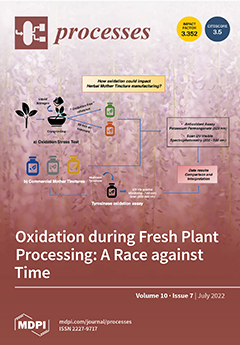Carbon Capture, Utilization and Storage (CCUS) is a method of burying the captured CO
2 into the reservoir and displacement of crude oil from reservoirs, which considers both economy and environmental protection. At present, it is considered as an important means to deal
[...] Read more.
Carbon Capture, Utilization and Storage (CCUS) is a method of burying the captured CO
2 into the reservoir and displacement of crude oil from reservoirs, which considers both economy and environmental protection. At present, it is considered as an important means to deal with global climate change. To ensure the safety of the CCUS scheme, it is very important to study the invasion and migration of CO
2 in different types of caprocks. In this paper, we first choose the injection-production method of fixed gas injection rate at the top of the reservoir and constant pressure oil production at the bottom. Secondly, the distribution of porosity and permeability in the caprock is designed, and four types of caprock models are established: homogeneous caprock, layered homogeneous caprock, heterogeneous caprock, and layered heterogeneous caprock. Finally, the intrusion amount and migration characteristics of CO
2 in caprock of four schemes in injection-production stage and burial stage are studied, and comprehensive analysis and evaluation are made in combination with the pressure distribution of caprock. In addition, the oil recovery ratio, geological CO
2 storage, and amount of CO
2 intrusion in caprock under different injection-production parameters in this model are also analyzed. This study provides a scientific basis for the safe operation of CCUS and geological storage of CO
2.
Full article





